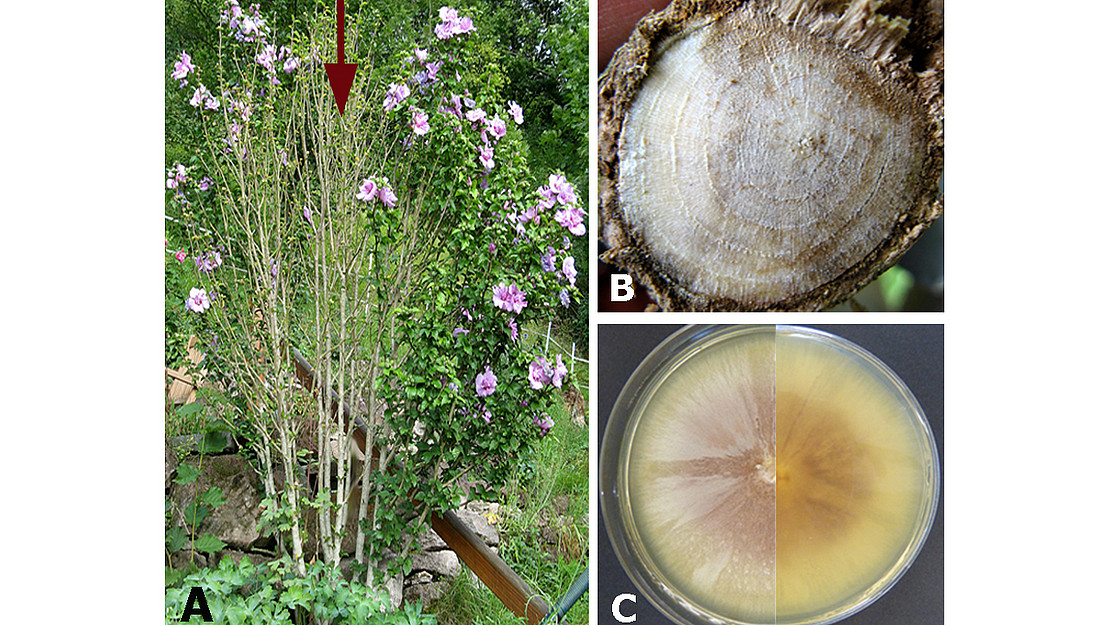This page contains automatically translated content.
Kürzlich entdeckter Pilz nach Witzenhausen benannt
 Image: University of Kassel
Image: University of KasselEs handelt sich um zwei neue Spezies der Gruppe Fusarium solani, einer Form von Mikropilzen, die im Gewebe von Wirtspflanzen leben. Prof. Dr. Maria Finckh, Leiterin des Fachgebiets Ökologischer Pflanzenschutz an der Universität Kassel, und ihr damaliger Doktorand Adnan Sisic entdeckten eine der Arten in einem Kompost; sie tauften die Neuentdeckung Fusarium stercicola. Die zweite Art entdeckten sie im Stängel einer Hibiskuspflanze und benannten sie nach ihrem Fundort Fusarium witzenhausenense.
Bei weiteren Untersuchungen stellten die Wissenschaftler fest, dass sich die Pilze auf das Wachstum mancher Wirtspflanzen zwar negativ auswirkten; auf andere Pflanzen wirkten sie sich hingegen günstig aus, etwa auf Erdklee.
Die molekulare Identifikation der neuen Arten wurde in Zusammenarbeit mit einem internationalen Team von Kollegen vom Biodiversity Institute Utrecht, Niederlande, vorgenommen. Der Fund und die Analyseergebnisse wurden vor kurzem im Fachmagazin „Antonie van Leeuwenhoek“ veröffentlicht.
Link zum Original-Artikel: https://doi.org/10.1007/s10482-018-1068-y
Kontakt:
Prof. Dr. Maria Finckh
Universität Kassel
Fachgebiet Ökologischer Pflanzenschutz
Tel.: +49 561 804-1562
E-Mail: mfinckh@uni-kassel.de